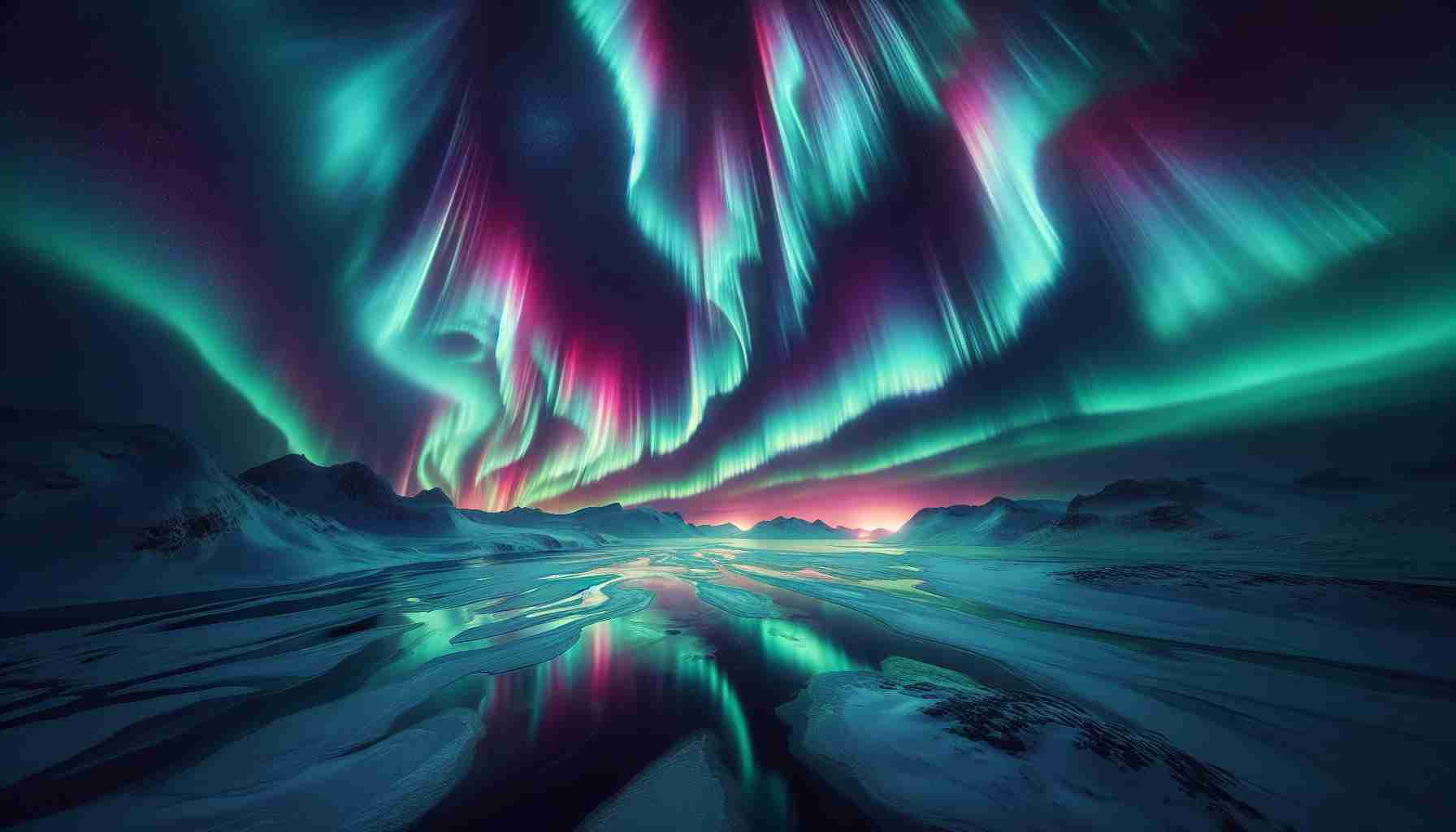The Northern Lights, an awe-inspiring natural phenomenon, frequently occurs near the Arctic Circle, particularly in Alaska, Canada, Iceland, Greenland, Norway, Sweden, and Finland. This enchanting display of lights typically emerges unannounced, with peak visibility from September to October and from March to April.
Known also as Aurora Borealis, the name originates from the combination of ‘Aurora,’ the name of the Roman Goddess of Dawn, and ‘Boreas,’ the Greek term for the north wind. The lights appear as a spellbinding dance across the night sky, weaving waves of vibrant greens, pinks, purples, and blues. The effect is a visual symphony that captivates onlookers with its otherworldly charm.
These celestial lights are caused by the interaction of charged particles from the sun with the Earth’s magnetic field, resulting in an unforgettable natural light show. For many travelers and photographers, witnessing the Northern Lights stands as an item of prominence on their bucket lists, drawing thousands to the magnetic north each year in hopes of catching a glimpse of this miraculous wonder. Whether seen in the remote wilderness or from the outskirts of a Nordic city, the Northern Lights remain one of the planet’s most sensational natural events.
Scientific Explanation of the Northern Lights
The Northern Lights, or Aurora Borealis, are a result of collisions between gaseous particles in the Earth’s atmosphere and charged particles released from the sun’s atmosphere. The variations in color are due to the type of gas particles that are colliding. The most common color, a pale yellowish-green, is produced by oxygen molecules located about 60 miles above the earth. Rare, all-red auroras are produced by high-altitude oxygen, at heights of up to 200 miles. Nitrogen produces blue or purplish-red aurora.
Importance of Geomagnetic Activity
The strength of geomagnetic activity, the KP index, significantly influences the visibility of the Northern Lights. A higher KP index indicates stronger geomagnetic activity and a greater likelihood of seeing the Aurora at lower latitudes, where it is not typically visible.
Environmental Impact
The Northern Lights themselves have no direct environmental impact as they are a naturally occurring phenomenon. However, tourism related to the Northern Lights can have environmental effects if not managed sustainably, including pollution and habitat disruption in sensitive arctic environments.
Advantages
The Aurora Borealis offers advantages beyond its sheer beauty. It attracts tourists, supporting local economies in remote areas. It also presents opportunities for scientific study, increasing our understanding of the Earth’s magnetic field and space weather. Photographic and cinematic depictions of the Northern Lights can bring awareness to the importance of natural preservation.
Disadvantages
A key challenge associated with the Northern Lights is their unpredictability, which can make planning trips around the phenomenon difficult. Cloud cover, light pollution from nearby cities, and unpredictable solar activity levels can all prevent the viewing of the Aurora. Furthermore, excessive tourism to view the Northern Lights can cause strain on local environments and indigenous communities if not properly managed.
Key Question:
Q: Can the Northern Lights be predicted accurately for travelers?
A: While there are tools that forecast the likelihood of aurora displays based on solar activity and geomagnetic conditions, predicting the exact time and strength of the Northern Lights can be challenging. Local weather conditions such as cloud coverage also play a significant role in viewing possibilities.
Key Challenges:
Managing the balance between promoting tourism and protecting delicate arctic ecosystems is a major challenge. Educating tourists about eco-conscious behavior and implementing sustainable tourism practices are vital to conserving the regions where the Northern Lights are visible.
Controversies:
There are few controversies directly related to the Northern Lights themselves. However, the commercialization of the phenomenon has sparked debate over the consequences of increased foot traffic in previously undisturbed natural areas.
For further general information regarding the Northern Lights, you could visit the NASA website: NASA or The National Oceanic and Atmospheric Administration (NOAA): NOAA. Remember that forecasts and tools for predicting the Northern Lights’ appearance, including solar activity reports and KP index forecasts, are available on specialized websites.
The source of the article is from the blog zaman.co.at

